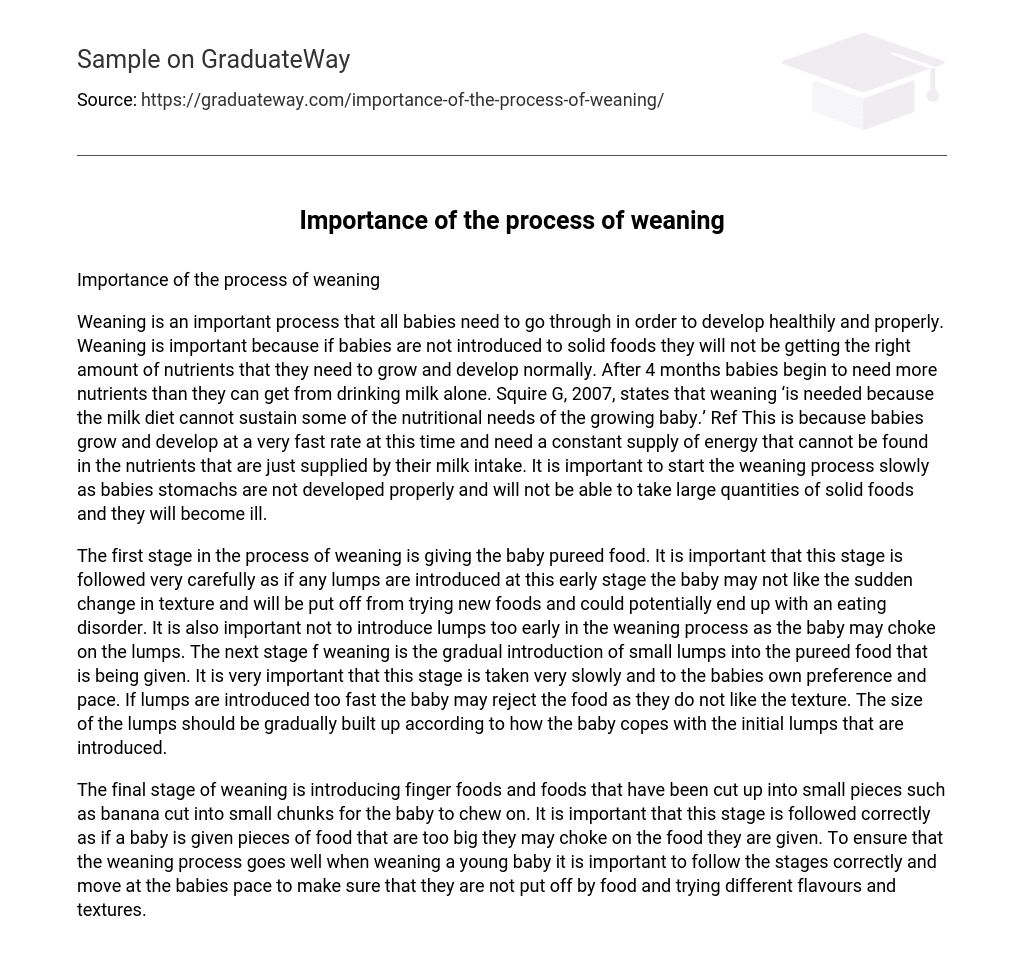Weaning is a crucial process for babies to grow and develop properly. By introducing solid foods, babies receive the necessary nutrients for their growth, unlike relying solely on milk. According to Squire G, 2007, weaning becomes necessary as the milk diet cannot meet the nutritional needs of a growing baby. This is because babies experience rapid growth and require a constant supply of energy, which milk alone cannot provide. Since babies’ stomachs are still developing and unable to handle large amounts of solid foods, it is important to gradually introduce them to avoid illness.
The initial step in the weaning process involves feeding the baby pureed food. This stage should be approached cautiously, as introducing lumps at this early stage may result in the baby disliking the sudden change in texture and potentially developing an eating disorder. It is also crucial to avoid introducing lumps too soon, as this may pose a choking hazard. Subsequently, small lumps are gradually incorporated into the pureed food during the next stage of weaning. This step should be taken slowly, allowing the baby to dictate their own pace and preference. If lumps are introduced too quickly, the baby may reject the food due to its texture. The size of the lumps should be increased gradually based on how well the baby manages with the initial introduction of lumps.
The last step in the weaning process is to introduce finger foods and cut-up foods, such as small chunks of banana, for the baby to chew on. It is crucial to follow this stage carefully because if the baby is given large pieces of food, they could choke. To ensure successful weaning of a young baby, it is important to follow the stages correctly and proceed at the baby’s own pace. This approach helps to prevent the baby from being discouraged by food and enables them to explore various flavors and textures.





